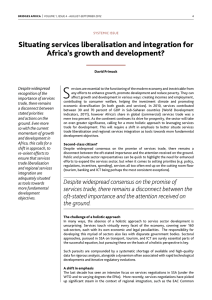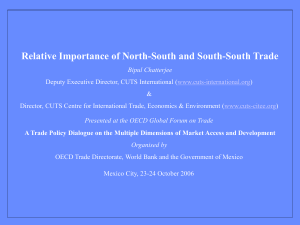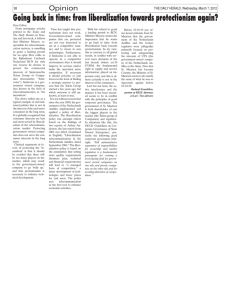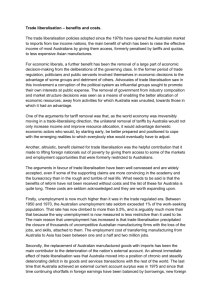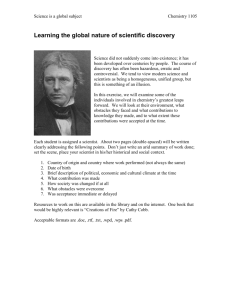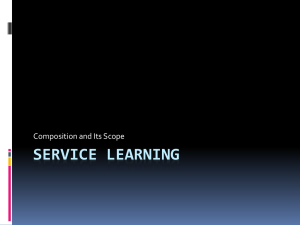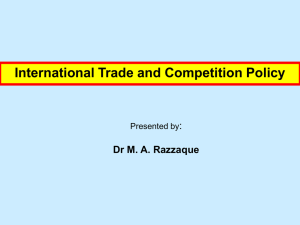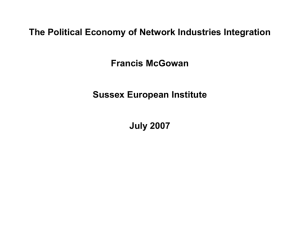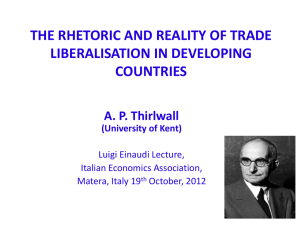Document in Word format
advertisement
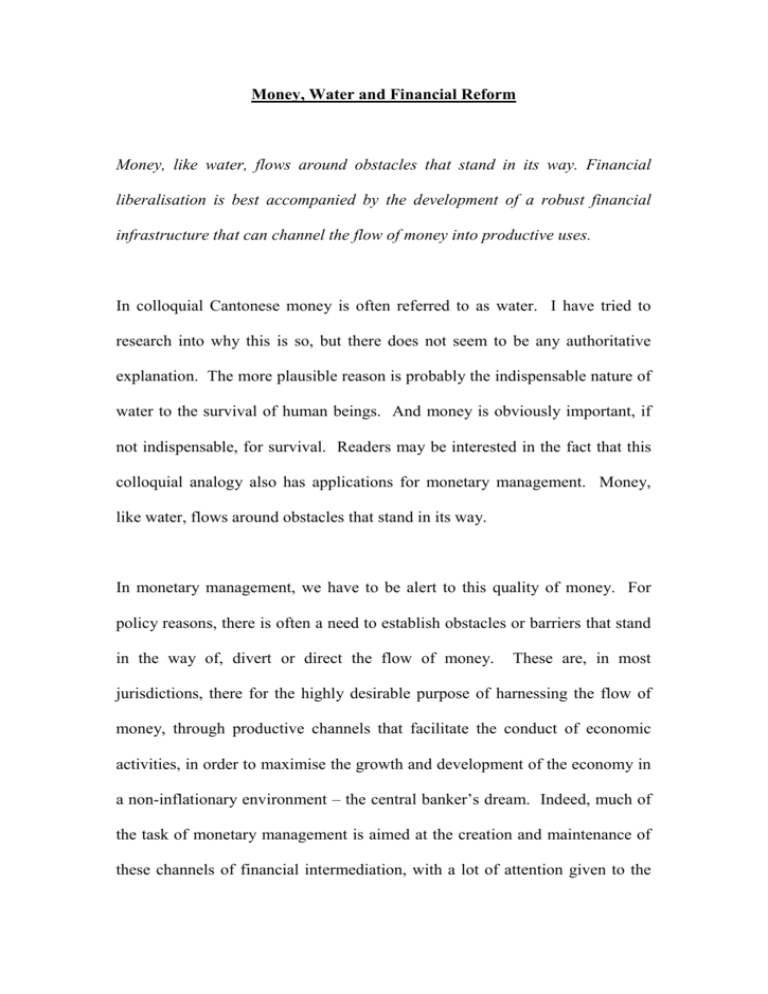
Money, Water and Financial Reform Money, like water, flows around obstacles that stand in its way. Financial liberalisation is best accompanied by the development of a robust financial infrastructure that can channel the flow of money into productive uses. In colloquial Cantonese money is often referred to as water. I have tried to research into why this is so, but there does not seem to be any authoritative explanation. The more plausible reason is probably the indispensable nature of water to the survival of human beings. And money is obviously important, if not indispensable, for survival. Readers may be interested in the fact that this colloquial analogy also has applications for monetary management. Money, like water, flows around obstacles that stand in its way. In monetary management, we have to be alert to this quality of money. For policy reasons, there is often a need to establish obstacles or barriers that stand in the way of, divert or direct the flow of money. These are, in most jurisdictions, there for the highly desirable purpose of harnessing the flow of money, through productive channels that facilitate the conduct of economic activities, in order to maximise the growth and development of the economy in a non-inflationary environment – the central banker’s dream. Indeed, much of the task of monetary management is aimed at the creation and maintenance of these channels of financial intermediation, with a lot of attention given to the construction of a safe, cost-effective and efficient financial infrastructure. Those who have surplus money have the choice of safely depositing it with banks to earn a predictable return in the form of interest income, or to seek to achieve a higher return by taking varying degrees of risks in either the debt or the equity markets. And if they are more attracted by the risk-return profile of investments denominated in foreign currencies, whether this is organised domestically or overseas, there should be a free channel for them to do so. However, in jurisdictions where the financial infrastructure – the platform for financial intermediation and the settlement system – is not yet well developed, there may be a need for a lot more obstacles and barriers against the free flow of money. Hopefully this need is a temporary one for the (legitimate) purpose of preventing or limiting the damage that could be inflicted on the economy if money is allowed to flow freely under the circumstances. But those responsible for monetary management have to appreciate four points. First, controls and restrictions on the flow of money can never be watertight, and they risk creating market distortions and, worse still, financial repression. Secondly, the removal of obstacles established in the way of the flow of money, akin to the opening up of floodgates, is often a much more difficult process than putting them in. Furthermore, the removal of one obstacle brings pressure to bear on another. Financial liberalisation demands much greater skills and care, and involves taking risks and the flexible application of policies. Thirdly, the risks are well worth taking. The free flow of money through a sophisticated financial infrastructure can do wonders for the economy. Fourthly, sequencing in financial liberalisation is of course important, given the need to manage the risks prudently and the damage of not doing so. But the process of financial liberalisation and the building of financial infrastructure do tend to reinforce each other. As we all can observe, the Mainland is now going through this very delicate process of financial liberalisation. The authorities are busy establishing the channels of financial intermediation though which money can be allowed to flow more freely for the long-term benefit of the economy. This – and not the creation of business opportunities per se – is the purpose of liberalisation. While, as the international financial centre of China, we are keen to play a meaningful role in this process and take advantage of the opportunities that flow from it, we have realistically to understand this line of thinking and the related concerns. For example, non-convertibility of the renminbi is an obstacle against the free flow of money that eventually will have to go, and I am glad that this is the declared intention of the Mainland authorities. But it is also the most difficult obstacle to remove, involving risks that are very difficult to manage. On the other hand, elements of the financial infrastructure that were built around this obstacle cannot be expected to survive the obstacle itself, and the Mainland authorities can, I am sure, appreciate this. The trick is how to dismantle them without undermining monetary and financial stability. Those that are keen to explore opportunities involving, for example, the possible relaxation in the participation of residents and non-residents of the Mainland in the equity markets of the A, B and H variations, and beyond, would do well if they developed a better understanding of the complexity of this. Joseph Yam 21 June 2001


